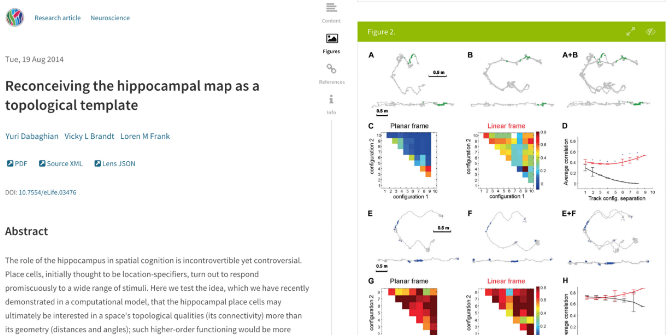 Debates on open access publishing may rumble on for some time to come. Until a perfect solution is found, Jørgen Carling writes that self-archiving, while not perfect, allows researchers to bring their work out from behind paywalls without jeopardizing academic integrity, and, at no cost.
Debates on open access publishing may rumble on for some time to come. Until a perfect solution is found, Jørgen Carling writes that self-archiving, while not perfect, allows researchers to bring their work out from behind paywalls without jeopardizing academic integrity, and, at no cost.
Most academic journals allow authors to post their articles online after a while, for instance 12 or 18 months after publications. Very few social scientists do, unfortunately. Making publications available in this way is referred to as ‘green open access’ or ‘self-archiving’. While the debates about open access and the future of academic publishing continue, self-archiving is something most authors could do right away to make their work more widely available.
To start self-archiving, you must be aware that an article exists in three important versions: 1) the version that you originally submitted; 2) the version that was eventually accepted for publication, after peer review; and 3) the published version incorporating copy-editing, layout and correction of proofs. It is version 2 that you are usually allowed to post after a certain period of time, never version 3.
The difference between your final text (version 2) and the copy-edited published text (version 3) would usually make little difference to the general reader. Part of the argument for open-access publishing is indeed that science should become more widely available to all, not just people with access to university libraries.
For academics who might want to cite your paper, the difference could matter. In my view, it would be fine to make a general reference to the article (i.e. to the published version in the journal) after having seen only ‘version 2’ in a repository. Citing specific passages would not be possible, since the page numbers are different and sentences could have been changed in the course of copy-editing.
Here is what you need to keep in mind when you publish, in order to have the option of self-archiving:
- Keep the latest version of your accepted article in a safe place. It is easy to forget once you know that it will be published and that you’ll have a pdf from the journal.
- When you sign the copyright form that the publisher requires, check what it says about posting the article online. (And keep this form, too, for future reference.) Alternatively, check the publisher’s web site. Some publisher’s are easier to relate to than others. For instance, SAGE and Taylor & Francis have posted single policies for all journals. Wiley-Blackwell’s website, by contrast, says that policies vary and that you’ll have to check your form.
Before the specified time period has passed and you can post your paper, there are two more things you have to do:
- Format your paper for sharing. What you must do, is to include full reference information for the published article and a link to the article on the publisher’s web site. In addition, you could adjust the formatting to make it more reader-friendly — for instance abandoning the double spacing that was probably required for the submission.
- Decide where you want to post your article. There are several options including your institution’s web site, your personal web site, or an open access repository. For a comprehensive list of repositories, see OpenDOAR.
I recommend using an established repository. If you use a well-known repository such as SSRN, the publically available version of your article is more likely to show up in searches. A well-organized repository will also give you a short and reliable permalink. For instance, http://ssrn.com/abstract=2131335 links to an article in Ethnic and Racial Studies that I have posted on SSRN.
Few people will go to a specific repository to look for your work, so you need to link to it. Links from your own web site or staff page are an obvious start. If you also link from sites such as LinkedIn and Academia.edu you get a double benefit: visitors to your profile on those sites are guided to your work, and these inbound links to the repository ensure that your article shows up higher in search results on Google and elsewhere.
Self-archiving is not the perfect solution to the open access challenge — but neither are the other established options, nor the more radical proposals, for that matter. Like most researchers I greatly value the role of peer-reviewed journals in academia. Well-managed journals promote good research. Problems such as coercive citation, misuse of impact factors, excessive time lags and overpricing are results of mismanagement and unethical practice, as much as symptoms of a ‘broken system’. I live with the system as an author, reviewer, editorial board member, supervisor and research manager and believe that, on the whole, it serves us well.
What self-archiving offers, however, is a possibility to start bringing our work out from behind paywalls without jeopardizing academic integrity, and at no cost. The greatest shortcoming, of course, is the inevitable delay on top of the time it takes from submission to publishing in a journal. By the time you self-archive, several years could have passed since you wrote your text. To us — readers and writers of blog posts — that sounds horrendous. But we are also social scientists, and should be able to place this delay in perspective. My own first academic article was published in 2002. Thanks to Google Scholar Citations, I can see how it has fared, citation-wise, since then. The highest number of citations was recorded in 2011, when the text was ten years old! This is not unusual. Academic articles retain their value for a long time, and the fact that self-archiving is not instant should not stop us from doing it.
Note: This article gives the views of the author(s), and not the position of the Impact of Social Sciences blog, nor of the London School of Economics.
About the author:
Jørgen Carling is Research Professor at the Peace Research Institute Oslo (PRIO), and Research Director of one of the institute’s departments. His research focuses on international migration and transnationalism. He has a strong interest in academic writing and communication. Jørgen is on the editorial board of two leading migration journals and has run training on publishing for early-career scholars. He has been a visiting scholar at the University of Oxford and the National University of Singapore. Find him at www.jorgencarling.com and on Twitter as @jorgencarling








Very helpful advice!
The Sherpa/Romeo database is useful for finding the OA/self-archiving policies of journals:
http://www.sherpa.ac.uk/romeo/index.php?fIDnum=|&mode=simple&la=en
I increasingly use it not just to check what I’m allowed to do with already published articles, but increasingly also take self-archiving into account when I decide where to submit my research in the first place.
Thanks, Johan – I didn’t know about this database. It is a useful tool! Unfortunately, the colour coding is a bit too blunt. Many journals are coded ‘yellow’ which indicates that only pre-refereeing versions can be posted, but the details show that post-refereeing versions can be posted (with some restrictions). In other words, some of the key distinctions between social-science journals are within the ‘yellow’ category. I will definitely start using this though, since the detailed journal view shows everything.
Very valuable advice Jørgen and thanks for posting. However, I just wanted to draw your attention to the fact that some publishers e.g. Cambridge University Press do allow the publishers’ PDF i.e. version 3 to be deposited in institutional and personal repositories / websites. Journal editors should also negotiate these conditions when signing new deals.
Good work.
Also see:
Ways to Increase Your Academic Visibility
http://papers.ssrn.com/sol3/papers.cfm?abstract_id=1817685